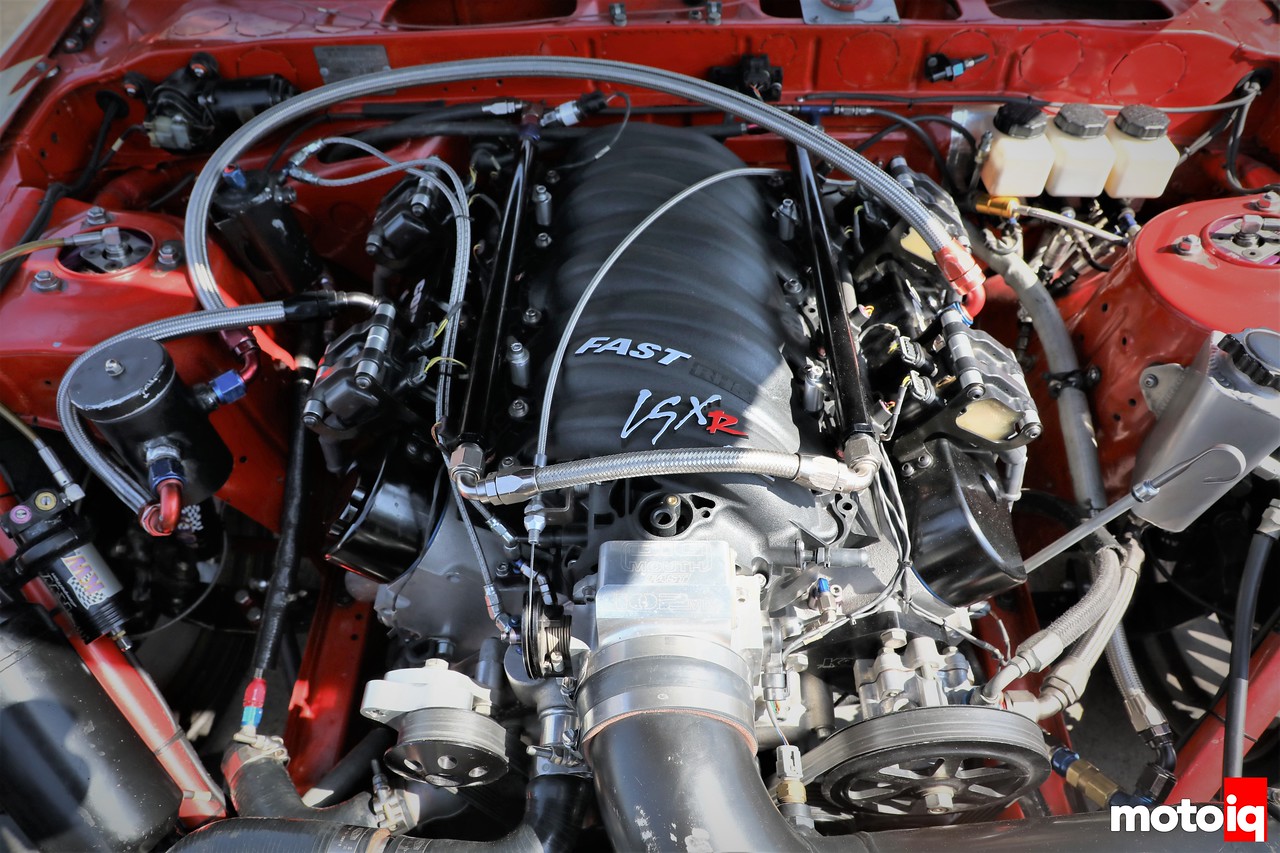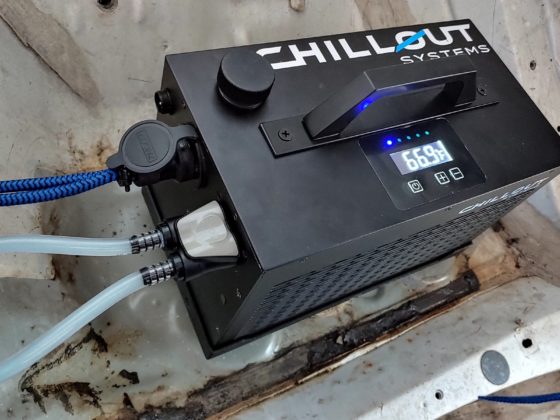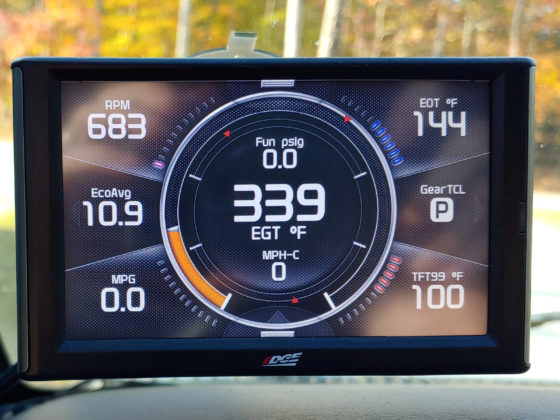
The cam is coated with assembly lube and installed into the engine.

For the cam timing gear, we used Comp Cams hardware for the chain, gears and adjustable timing gear.

The cam drive gear is bolted up so the cam can be degreed in.

The roller lifters are also dropped into place.

The cam is now degreed in. This is a step many engine builders skip that is pretty critical. Every cam has a spec for the degree of crank rotation when the intake valve is fully open and the cam must be adjusted to this. Howard uses a degree wheel and a dial indicator to determine this. The engine is turned clockwise and when the intake cam lobe for cylinder #1 is near full lift, the degree and the amount of lift indicated is noted and the engine is continued to be turned clockwise. The top center of lift is passed and the engine is slowly and carefully turned until the lift falls to the noted height. The degree of rotation that this point of the lift is noted and added to the first noted degree number and divided by 2 to give the true top center number. The cam timing is adjusted by putting the gear in one of several holes, skipping teeth and using an eccentric spacer over the dowel pin to get the manufacture desired intake lobe full open point. Because this is tedious and somewhat hard to understand, many engine builders skip this even though it is very important!

Next, the high capacity Mellings oil pump was installed over the nose of the crank. The LS has a Georotor type oil pump like an import engine.




7 comments
Hard to believe this build is rather ‘old school’ in the LS world. Amazing that such a simple (but well designed) engine has been continuously improved by the aftermarket for 20 years now. Great photos too!
It’s a simple but overbuilt build where durability is more important than power output.
Is there anything Howard CAN’T do?
How did this engine do in the car in practical use this season? Grid life Midwest was a long, long time ago.
It’s a demo car, not a competition car. Its last outing was during SEMA Show.
What’s that got to do with anything? Just curious if it did all the things you had set out for it to do. Ran well, didn’t blow up etc.
Of course, it ran well.